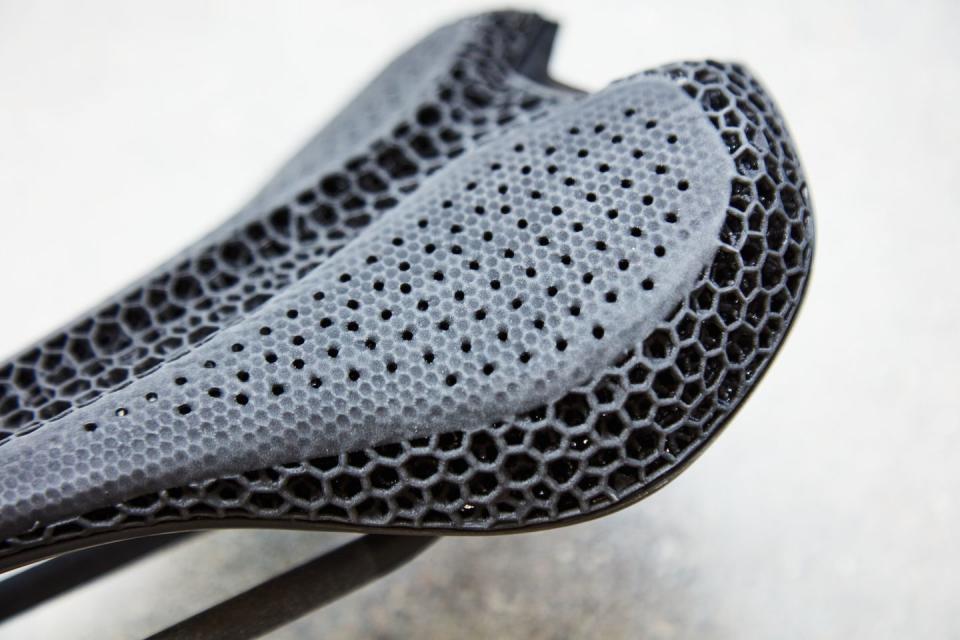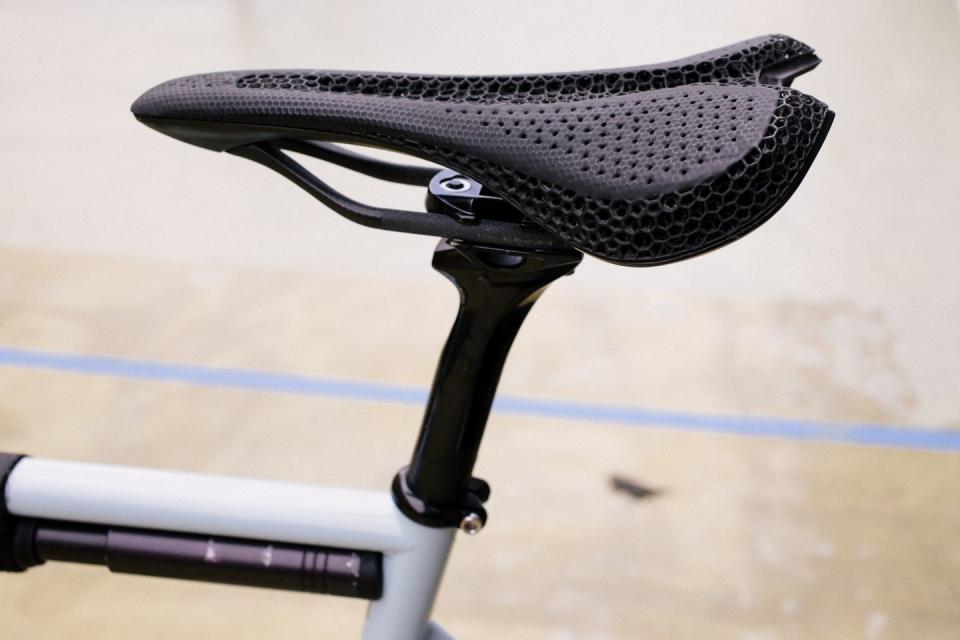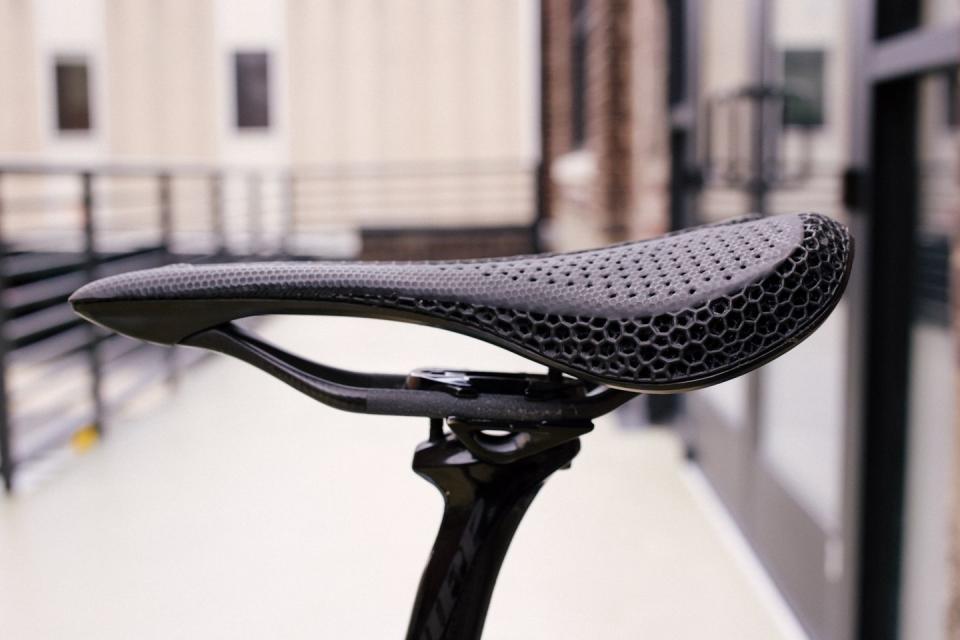Specialized’s Latest Saddle Expands Its 3D Printed Saddle Range With a More Traditional Long Shape

"Hearst Magazines and Yahoo may earn commission or revenue on some items through the links below."
Takeaway: Specialized’s latest saddle expands its 3D printed saddle range with a more traditional long shape. It is exceptionally comfortable, really light, and expensive.
Can a saddle actually be good enough to be worth $450? My gut reaction is to yell very loudly “NO” into my computer screen, and I suspect that’s how most people might feel about this saddle upon first reading the price. But, the reality is whether or not you’ll choose to spend this amount on a new Romin Evo with Mirror Technology will probably come down to how well you get along with your current saddle. If you’re someone that struggles to find comfort, then the unique support offered by the Romin Evo might be worth a look.

Specialized first unveiled its 3D printed saddle technology—which they call Mirror—in 2020 with the release of the S-Works Power with Mirror model. In short the upper is printed using UV lights which “print” the upper in a bath of liquid. This lets Specialized produce the upper with essentially no limitations on how it tunes the support provided. It makes for saddle padding that is leaps and bounds better than foam and gel.

Saddle shapes and fit are highly user specific; what works for one rider doesn’t always work for someone else. Personally, my body doesn't get along with stub-nosed saddles. So while the technology was intriguing to me, I wanted to wait until Specialized carried it over to a more traditional saddle shape before I could give it a fair assessment.

In addition to the shape and length differences between the new Romin EVO and the Power Mirror is in the claimed level of support. In the Power saddle, Specialized claims to have used 14,000 struts and 7,799 junctions. The Romin EVO version claims to use 22,000 struts and 10,700 nodes. (I say claimed here because I didn’t count them out individually to confirm; we’re all just going to have to take Specialized’s word on it.) Basically, if you feel the saddle’s side by side, the Romin EVO has quite a bit more squish to it than the Power.

It doesn’t feel particularly squishy when you ride on the saddle, at least not in the usual way a squishy foam saddle feels. Those traditional saddles typically leave me bouncing and eventually developing hot spots. The 3D-printed top is soft in certain places while being incredibly firm and supportive in others.

The result of all this tech is that you don’t bounce at all. It almost feels like you’re hovering over the saddle rather than sitting on it. The point is that, yes, it’s a really comfortable saddle. I've ridden close to 500 miles on it and I hate to admit it but I wish I had it on all my bikes.

Really, the only reason I can think to dislike this saddle is the price. Specialized did not confirm future plans to offer Mirror saddles in lower-priced Pro, Expert, and Comp versions but did say that we “could count on seeing an expansion of that technology into future product offerings.” I want to hope that this means lower-cost saddle models using Mirror technology and not more S-Works models. Also the weight, it’s not particularly light. Or at least not as light as I think a $450 saddle should be, tipping our scale at 195g for a 143mm width. An S-Works Power saddle weighs in at 159g while an S-Works Romin Evo comes in at just 131g and both retail for about $150 less. So unlike many cycling products you are paying for an increase in comfort instead of a drop in weight.

Until Specialized decided to slap the fancy 3D printed bits on a nylon shell with metal rails and cut the price in roughly half, I expect many riders to simply balk at the price tag and move on. Or at least look elsewhere to try something similar like fi’zi:k saddles using a similar 3D printed top with prices starting at $250.
You Might Also Like

